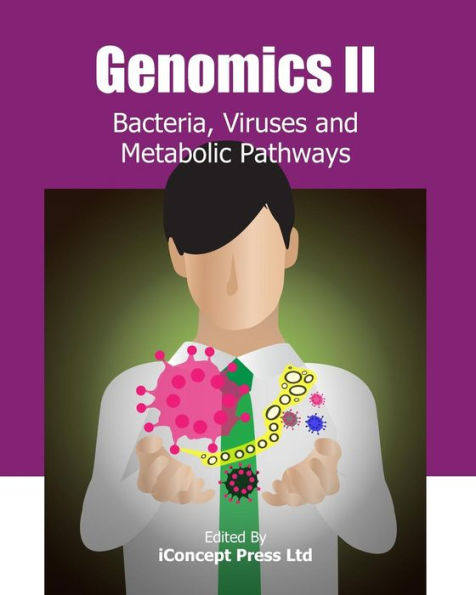

Paperback
-
PICK UP IN STORECheck Availability at Nearby Stores
Available within 2 business hours
Related collections and offers
Overview
Genomics is the study of the genomes of organisms. The field includes intensive efforts to determine the entire DNA sequence of organisms and fine-scale genetic mapping efforts. It is a discipline in genetics that applies recombinant DNA, DNA sequencing methods, and bioinformatics to sequence, assemble, and analyze the function and structure of genomes. Genomics II - Bacteria,
Viruses and Metabolic Pathways is the second volume of our Genomics series. There are totally three volumes in this series.
Chapter 1 describes an analysis and statistical scoring approach for cellular assay data based on single-cell information.
In Chapter 2, the concept of metabolic pathways analysis is introduced. The mathematic principle of extreme pathway and elementary flux mode are compared.
Chapter 3 is dedicated to the Pathway- and Network-based analysis of the high-throughput genomic data. The author introduced Reactome FI Cytoscape plugin that can construct a network based on the list of genes of interest, cluster the constructed network, and annotate network modules based on pathways and Gene Ontology terms.
Chapter 4 provides a review of microarray and RNA-seq techniques for high-throughput gene expression measurements, discusses the strategies and issues of high-level analysis on gene expression data,
and introduces a new algorithm for analyzing microarray data.
Chapter 5 summarizes our current understanding of the intracellular defenses by APOBEC family against invading nucleic acids including endogenous retroelements that make up more than 40% of the mammalian genome. Chapter 6 discusses immunoinformatics software that can be employed to study the evolution of antigenic epitopes. Chapter 7 discusses the integration of retroviral genome into host DNA, which is a critical step in the life cycle of a retrovirus. The authors developed an assay using some target DNA sequences from common MLV integration sites in the genome of murine lymphomas and an HIV-1 integration site in the genome of T cell integrated into the target DNA in vitro.
Chapter 8 discusses how microarray can be as a promising new technology for broad-spectrum pathogen detection, making it possible to test for the presence of thousands of viruses simultaneously.
Chapter 9 discusses the origin of the unilateral aminoacylation specificity based on mt SerRS as a typical example. Mitochondrial (mt) aminoacyl-tRNA synthetases (aaRSs) are able to charge both mt and bacterial cognate tRNAs, whereas most bacterial synthetases including serine (Ser) are only able to charge bacterial cognate tRNAs, whose phenomenon is termed unilateral aminoacylation specificity between mitochondria and bacteria.
In Chapter 10, the authors chosen Cytoplasmic polyhedrosis virus (CPV) and hepatitis B virus (HBV)
to demonstrate how we can using structural biology techniques to explore the viral genome, such as genome package and distribution, and mRNA transcribing/capping/releasing of viruses.
Chapter 11 provides an overview of the steps required to correctly perform the genotypic resistance test; a detailed description of computational programs used for the interpretation of this assay is reported.
Chapter 12 discusses Influenza C virus, which is a member of the Orthomyxoviridae, a family comprising viruses with segmented single-stranded RNA genomes of negative polarity.
Chapter 13 provides comprehensive essential genes of Streptococcus sanguinis and compares them among streptococcal species. A model has been created to predict essential genes in bacteria.
Chapter 14 discusses Lactobacillus casei Zhang, which was a new probiotic bacterium isolated from traditional home-made koumiss in Inner Mongolia of China. Chapter 15 discusses how the association of comparative genome analysis and protein structure prediction methods could help in high-throughput genome analysis aiming the structure-based rational drug design.

Product Details
| ISBN-13: | 9781480254145 |
|---|---|
| Publisher: | CreateSpace Publishing |
| Publication date: | 10/24/2013 |
| Pages: | 324 |
| Product dimensions: | 8.00(w) x 10.00(h) x 0.84(d) |
